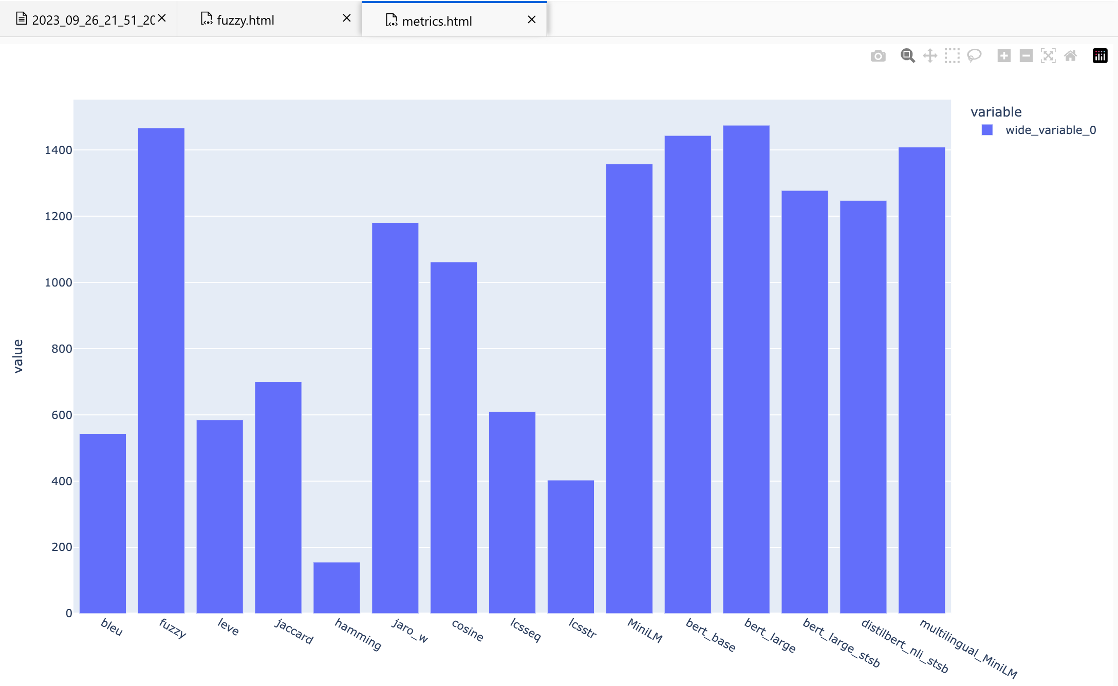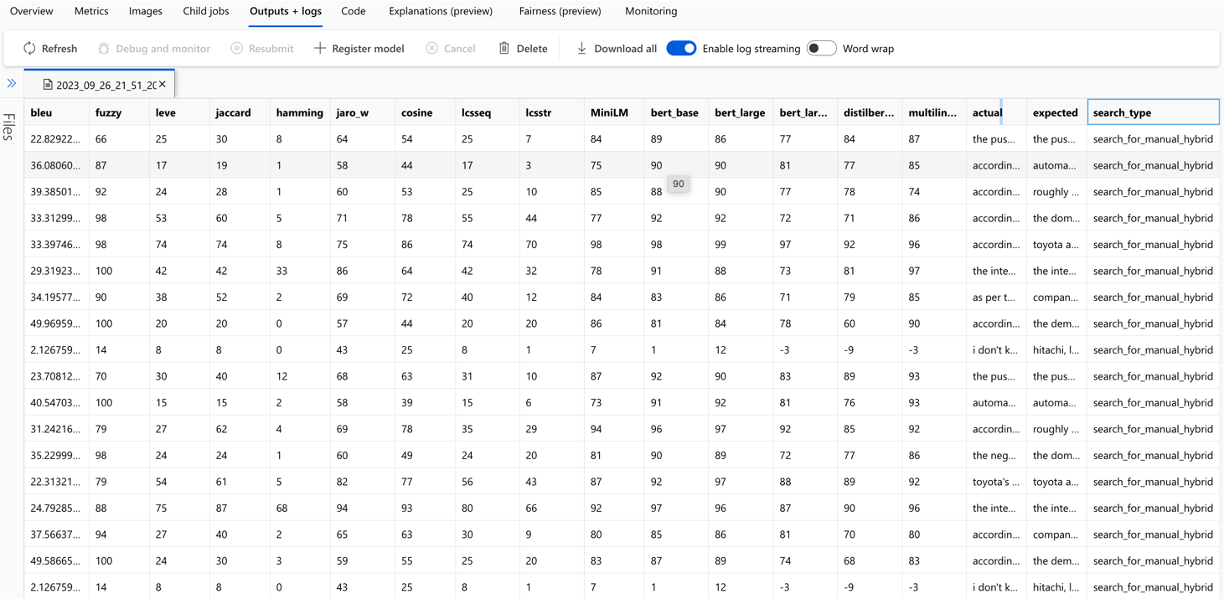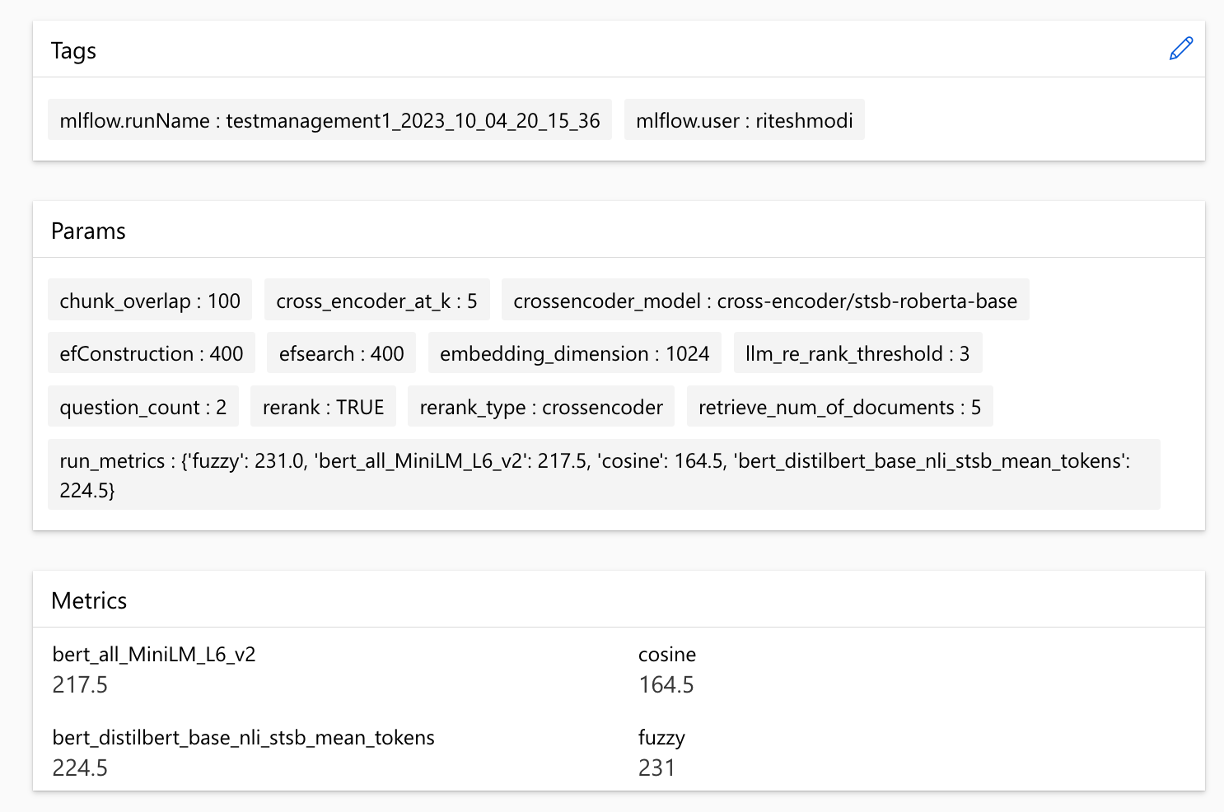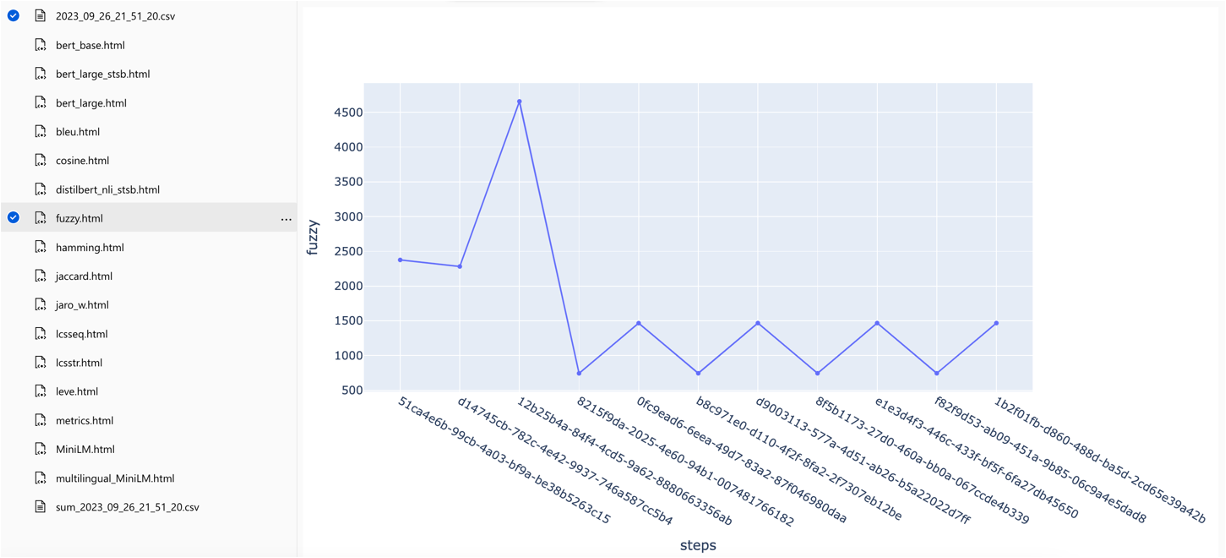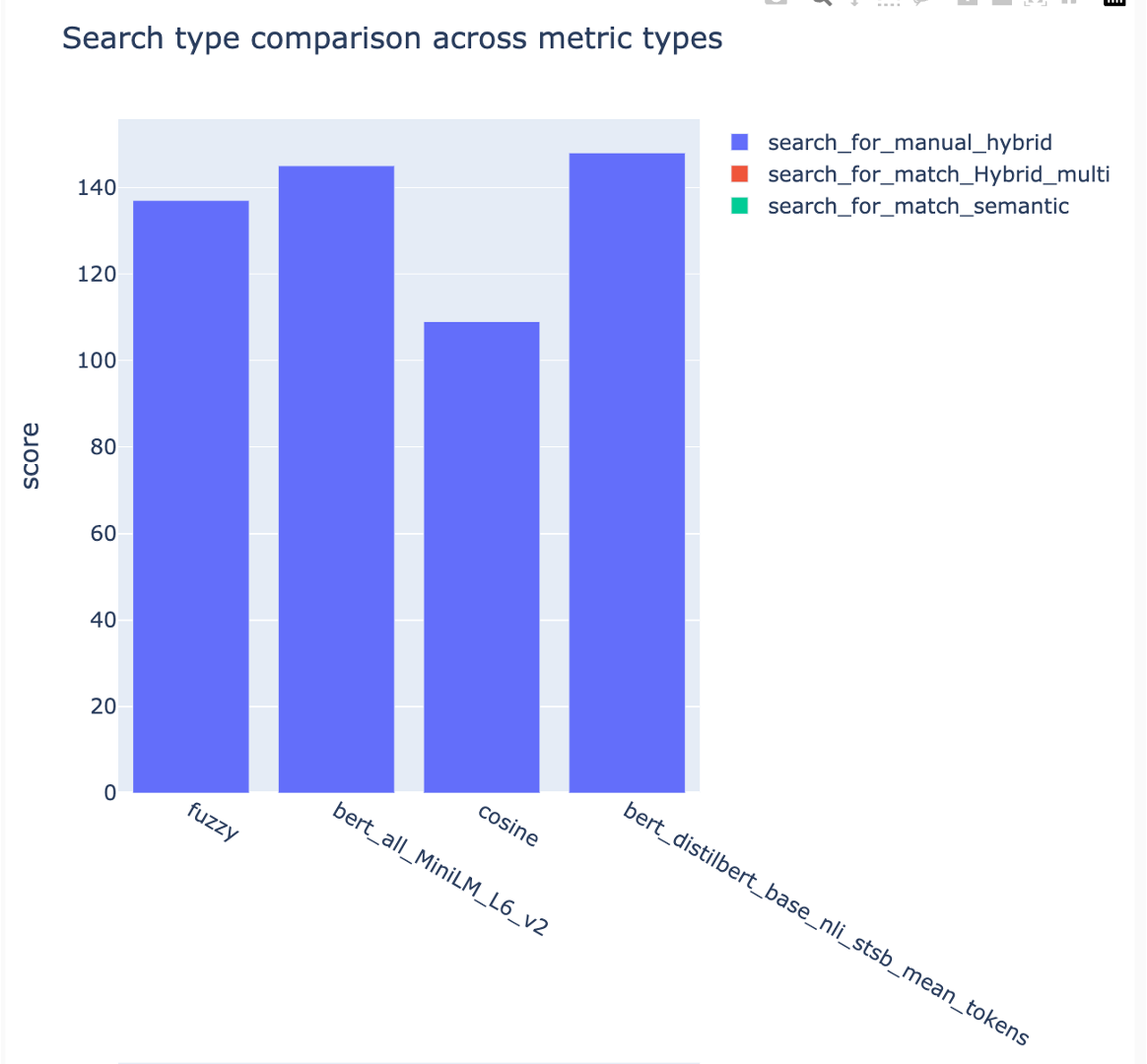The RAG Experiment Accelerator is a versatile tool that helps you conduct experiments and evaluations using Azure AI Search and RAG pattern. This document provides a comprehensive guide that covers everything you need to know about this tool, such as its purpose, features, installation, usage, and more.
The main goal of the RAG Experiment Accelerator is to make it easier and faster to run experiments and evaluations of search queries and quality of response from OpenAI. This tool is useful for researchers, data scientists, and developers who want to:
- Test the performance of different Search and OpenAI related hyperparameters.
- Compare the effectiveness of various search strategies.
- Fine-tune and optimize parameters.
- Find the best combination of hyperparameters.
- Generate detailed reports and visualizations from experiment results.
The RAG Experiment Accelerator is config driven and offers a rich set of features to support its purpose:
-
Experiment Setup: You can define and configure experiments by specifying a range of search engine parameters, search types, query sets, and evaluation metrics.
-
Integration: It integrates seamlessly with Azure AI Search, Azure Machine Learning, MLFlow and Azure OpenAI.
-
Rich Search Index: It creates multiple search indexes based on hyperparameter configurations available in the config file.
-
Multiple Document Chunking Strategies: The tool supports multiple chunking strategies, including using Azure Document Intelligence and basic chunking using langchain. This gives you the flexibility to experiment with different chunking strategies and evaluate their effectiveness.
-
Query Generation: The tool can generate a variety of diverse and customizable query sets, which can be tailored for specific experimentation needs.
-
Multiple Search Types: It supports multiple search types, including pure text, pure vector, cross-vector, multi-vector, hybrid, and more. This gives you the ability to conduct comprehensive analysis on search capabilities and results.
-
Sub-Querying: The pattern evaluates the user query and if it finds it complex enough, it breaks it down into smaller sub-queries to generate relevant context.
-
Re-Ranking: The query responses from Azure AI Search are re-evaluated using LLM and ranked according to the relevance between the query and the context.
-
Metrics and Evaluation: You can define custom evaluation metrics, which enable precise and granular assessment of search algorithm performance. It includes distance-based, cosine, semantic similarity, and more metrics out of the box.
-
Report Generation: The RAG Experiment Accelerator automates the process of report generation, complete with visualizations that make it easy to analyze and share experiment findings.
-
Multi-Lingual: The tool supports language analyzers for linguistic support on individual languages and specialized (language-agnostic) analyzers for user-defined patterns on search indexes. For more information, see Types of Analyzers.
Two options are available, install locally or inside a development container.
To use the RAG Experiment Accelerator, follow these installation steps:
- Clone the repository: Clone the accelerator's repository from [GitHub].
git clone https://github.com/microsoft/rag-experiment-accelerator.git- setup env file: Copy
.env.templateand save as.envfile. Provide values for all the keys
LOGGING_LEVEL is INFO by default. Allowed logging levels are NOTSET, DEBUG, INFO, WARN, ERROR, CRITICAL.
- Execute the requirements.txt in a conda (first install Anaconda/Miniconda) or virtual environment (then install a couple of dependencies - prompted on the run) to install the dependencies.
conda create -n rag-test python=3.11
conda activate rag-test
pip install .- Install Azure CLI and authorize:
az login
az account set --subscription="<your_subscription_guid>"
az account show- Copy your files (in PDF, HTML, Markdown, Text, JSON or DOCX format) into the
datafolder.
Install the following software on the machine you will perform the deployment from:
- For Windows - Windows Store Ubuntu 18.04 LTS
- Docker Desktop
- Visual Studio Code
- Remote-Containers VS Code Extension
To enable Developing inside a Container you must configure the integration between Docker Desktop and Ubuntu on your machine.
- Launch Docker Desktop
- Open Settings > General. Make sure the *Use the WSL 2 based engine" is enabled.
- Navigate to Settings > Resources > WSL INTEGRATION.
- Ensure *Enable Integration with my default WSL distro" is enabled.
- Enable the Ubuntu-18.04 option.
- Select Apply & Restart
Now that Docker Desktop and Ubuntu are integrated, we want to Access the Ubuntu bash prompt from inside VSCode.
- Launch VSCode.
- Select View > Terminal. A new window should open along the bottom of the VSCode window.
- From this windows use the Launch Profile dropdown to open the Ubuntu 18.04 (WSL) terminal.
- A bash prompt should open in the format
{username}@{machine_name}:/mnt/c/Users/{username}$
Once this is complete, you are ready to configure Git for your Ubuntu WSL environment.
The next step is to configure Git for your Ubuntu WSL environment. We will use the bash prompt from the previous step to issue the following commands:
Set Git User Name and Email
git config --global user.name "Your Name"
git config --global user.email "youremail@yourdomain.com"Set Git UseHttps
git config --global credential.useHttpPath trueConfigure Git to use the Windows Host Credential Manager
git config --global credential.helper "/mnt/c/Program\ Files/Git/mingw64/libexec/git-core/git-credential-manager-core.exe"In your Ubuntu 18.04(WSL) terminal from the previous step, follow the directions here to install Azure CLI.
Install Azure CLI and authorize:
az login
az account set --subscription="<your_subscription_guid>"
az account showCopy your files (in PDF, HTML, Markdown, Text, JSON or DOCX format) into the data folder.
- Azure AI Search Service (Note: Semantic Search is available in Azure AI Search, at Basic tier or higher.)
- Azure OpenAI Service or access to the OpenAI API
- Azure Machine Learning Resources
az login
az deployment group create --subscription <subscription-id> --resource-group <resource-group> --template-file infra/main.bicepTo use the RAG Experiment Accelerator, follow these steps:
- Modify the
config.jsonfile with the hyperparameters for your experiment. - Run
01_index.py(python 01_index.py) to create Azure AI Search indexes and load data into them.
python 01_index.py
-d "The directory holding the configuration files and data. Defaults to current working directory"
-dd "The directory holding the data. Defaults to data"
-cf "JSON config filename. Defaults to config.json"- Run
02_qa_generation.py(python 02_qa_generation.py) to generate question-answer pairs using Azure OpenAI.
python 02_qa_generation.py
-d "The directory holding the configuration files and data. Defaults to current working directory"
-cf "JSON config filename. Defaults to config.json"- Run
03_querying.py(python 03_querying.py) to query Azure AI Search to generate context, re-rank items in context, and get response from Azure OpenAI using the new context.
python 03_querying.py
-d "The directory holding the configuration files and data. Defaults to current working directory"
-cf "JSON config filename. Defaults to config.json"- Run
04_evaluation.py(python 04_evaluation.py) to calculate metrics using various methods and generate charts and reports in Azure Machine Learning using MLFlow integration.
python 04_evaluation.py
-d "The directory holding the configuration files and data. Defaults to current working directory"
-cf "JSON config filename. Defaults to config.json"{
"name_prefix": "Name of experiment, search index name used for tracking and comparing jobs",
"chunking": {
"chunk_size": "Size of each chunk e.g. [500, 1000, 2000]" ,
"overlap_size": "Overlap Size for each chunk e.g. [100, 200, 300]"
},
"embedding_models": "see 'Description of embedding models config' below",
"embedding_dimension" : "embedding size for each chunk e.g. [384, 1024]. Valid values are 384, 768,1024" ,
"ef_construction" : "ef_construction value determines the value of Azure AI Search vector configuration." ,
"ef_search": "ef_search value determines the value of Azure AI Search vector configuration.",
"language": {
"analyzer_name" : "name of the analyzer to use for the field. This option can be used only with searchable fields and it can't be set together with either searchAnalyzer or indexAnalyzer.",
"index_analyzer_name" : "name of the analyzer used at indexing time for the field. This option can be used only with searchable fields. It must be set together with searchAnalyzer and it cannot be set together with the analyzer option.",
"search_analyzer_name" : "name of the analyzer used at search time for the field. This option can be used only with searchable fields. It must be set together with indexAnalyzer and it cannot be set together with the analyzer option. This property cannot be set to the name of a language analyzer; use the analyzer property instead if you need a language analyzer.",
},
"rerank": "determines if search results should be re-ranked. Value values are TRUE or FALSE" ,
"rerank_type": "determines the type of re-ranking. Value values are llm or crossencoder",
"llm_re_rank_threshold": "determines the threshold when using llm re-ranking. Chunks with rank above this number are selected in range from 1 - 10." ,
"cross_encoder_at_k": "determines the threshold when using cross-encoding re-ranking. Chunks with given rank value are selected." ,
"crossencoder_model" :"determines the model used for cross-encoding re-ranking step. Valid value is cross-encoder/stsb-roberta-base",
"search_types" : "determines the search types used for experimentation. Valid value are search_for_match_semantic, search_for_match_Hybrid_multi, search_for_match_Hybrid_cross, search_for_match_text, search_for_match_pure_vector, search_for_match_pure_vector_multi, search_for_match_pure_vector_cross, search_for_manual_hybrid. e.g. ['search_for_manual_hybrid', 'search_for_match_Hybrid_multi','search_for_match_semantic' ]",
"retrieve_num_of_documents": "determines the number of chunks to retrieve from the search index",
"metric_types" : "determines the metrics used for evaluation purpose. Valid value are lcsstr, lcsseq, cosine, jaro_winkler, hamming, jaccard, levenshtein, fuzzy, bert_all_MiniLM_L6_v2, bert_base_nli_mean_tokens, bert_large_nli_mean_tokens, bert_large_nli_stsb_mean_tokens, bert_distilbert_base_nli_stsb_mean_tokens, bert_paraphrase_multilingual_MiniLM_L12_v2, llm_answer_relevance, llm_context_precision. e.g ['fuzzy','bert_all_MiniLM_L6_v2','cosine','bert_distilbert_base_nli_stsb_mean_tokens']",
"azure_oai_chat_deployment_name": "determines the Azure OpenAI deployment name",
"embedding_model_name": "embedding model name",
"openai_temperature": "determines the OpenAI temperature. Valid value ranges from 0 to 1.",
"search_relevancy_threshold": "the similarity threshold to determine if a doc is relevant. Valid ranges are from 0.0 to 1.0",
"chunking_strategy": "determines the chunking strategy. Valid values are 'azure-document-intelligence' or 'basic'",
}embedding_models is an array containing the configuration for the embedding models to use. Embedding model type must be azure for Azure OpenAI models and sentence-transformer for HuggingFace sentence transformer models.
{
"type": "azure",
"deployment_name": "the deployment name of the model",
"dimension": "the dimension of the embedding model. Defaults to 1536 which is the dimension of text-embedding-ada-002"
}{
"type": "sentence-transformer",
"model_name": "the name of the sentence transformer model",
"dimension": "the dimension of the model. This field is not required if model name is one of ['all-MiniLM-L6-v2', 'all-mpnet-base-v2', 'bert-large-nli-mean-tokens]"
}The solution integrates with Azure Machine Learning and uses MLFlow to manage experiments, jobs, and artifacts. You can view the following reports as part of the evaluation process:
This section outlines common gotchas or pitfalls that engineers/developers/data scientists may encounter while working with RAG Experiment Accelerator.
To successfully utilize this solution, you must first authenticate yourself by logging in to your Azure account. This essential step ensures you have the required permissions to access and manage Azure resources used by it. You might errors related to storing QnA data into Azure Machine Learning Data Assets, executing the query and evaluation step as a result of inappropriate authorization and authentication to Azure. Refer to Point 4 in this document for authentication and authorization.
There might be situations in which the solution would still generate errors inspite of valid authentication and authorization. In such cases, start a new session with a brand new terminal instance, login to Azure using steps mentioned in step 4 and also check if the user has contribute access to the Azure resources related to the solution.
This solution utilizes several configuration parameters in config.jsonthat directly impact its functionality and performance. Please pay close attention to these settings:
retrieve_num_of_documents: This config controls the initial number of documents retrieved for analysis. Excessively high or low values can lead to "index out of range" errors due to rank processing of Search AI results. cross_encoder_at_k: This config influences the ranking process. A high value might result in irrelevant documents being included in the final results. llm_re_rank_threshold: This config determines which documents are passed to the language model (LLM) for further processing. Setting this value too high could create an overly large context for the LLM to handle, potentially leading to processing errors or degraded results. This might also result in exception from Azure OpenAI endpoint.
Before running this solution, please ensure you've correctly set up both your Azure OpenAI deployment name within config.json file and add relevant secrets to environment variables (.env file). This information is crucial for the application to connect to the appropriate Azure OpenAI resources and function as designed. If you're unsure about the configuration data, please refer to .env.template and config.json file. The solution has been tested with GPT 3.5 turbo model and needs further tests for any other model.
During the QnA generation step, you may occasionally encounter errors related to the JSON output received from Azure OpenAI. These errors can prevent the successful generation of few questions and answers. Here's what you need to know:
Possible Causes:
Incorrect Formatting: The JSON output from Azure OpenAI may not adhere to the expected format, causing issues with the QnA generation process. Content Filtering: Azure OpenAI has content filters in place. If the input text or generated responses are deemed inappropriate, it could lead to errors. API Limitations: The Azure OpenAI service have token and rate limitations that affect the output.
We welcome your contributions and suggestions. To contribute, you need to agree to a Contributor License Agreement (CLA) that confirms you have the right to, and actually do, grant us the rights to use your contribution. For details, visit [https://cla.opensource.microsoft.com].
When you submit a pull request, a CLA bot will automatically check whether you need to provide a CLA and give you instructions (for example, status check, comment). Follow the instructions from the bot. You only need to do this once for all repos that use our CLA.
Before you contribute, make sure to run
pip install -e .
pre-commit install
This project follows the Microsoft Open Source Code of Conduct. For more information, see the Code of Conduct FAQ or contact opencode@microsoft.com with any questions or comments.
- Branch Naming Convention:
- Use the GitHub UI to include a tag in the branch name, then create the branch directly from the UI. Here are some examples:
bug/11-short-descriptionfeature/22-short-description
- Use the GitHub UI to include a tag in the branch name, then create the branch directly from the UI. Here are some examples:
- Merging Changes:
- When merging, squash your commits to have up to 3 incremental commits for Pull Requests (PRs) and merges.
- Project maintainers can merge accepted code changes from contributors or contributors can request Write Permissions to the repo to merge a pull request once it has been reviewed by project maintainers.
- Project Maintainers can be contacted via email.
- Branch Hygiene:
- Delete the branch after it has been merged.
- Testing Changes Locally:
- Before merging, test your changes locally.
- Naming Conventions:
- Use snake case for metric names and configuration variables, like
example_snake_case. - Set up your Git username to be your first and last name, like this:
git config --global user.name "First Last"
- Use snake case for metric names and configuration variables, like
- Issue Tracking:
- Working on a contribution to the RAG Experiment Accelerator? Before opening a new issue, make sure to check if the feature has already been requested by searching for it in the associated project issue tracker, and consider adding to that discussion instead. Otherwise, please open an issue for it using the feature request template or create a PR and make sure it is associated to the project.
This project might contain trademarks or logos for projects, products, or services. You must follow Microsoft's Trademark & Brand Guidelines to use Microsoft trademarks or logos correctly. Don't use Microsoft trademarks or logos in modified versions of this project in a way that causes confusion or implies Microsoft sponsorship. Follow the policies of any third-party trademarks or logos that this project contains.
